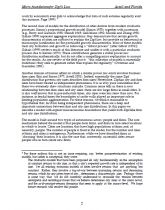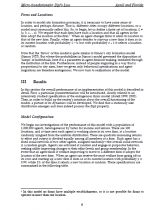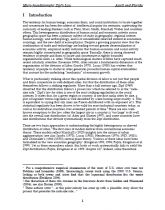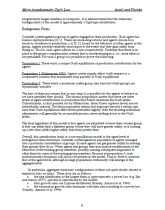Referát: Emergent Cities: Micro-foundations of Zipf’s Law
Skrýt detaily | Oblíbený- Kvalita:88,8 %
- Typ:Referát
- Univerzita:Univerzita Tomáše Bati ve Zlíně
- Fakulta:Fakulta managementu a ekonomiky
- Kategorie:Ekonomika
- Podkategorie:Management
- Předmět:Management
- Autor:eliseus
- Rozsah A4:15 strán
- Zobrazeno:1 894 x
- Stažené:0 x
- Velikost:0,3 MB
- Formát a přípona:PDF dokument (.pdf)
- Jazyk:anglický
- ID projektu:2898
- Poslední úprava:27.03.2014
The tendency for human beings, economic firms and social institutions to locate together
has been the subject of intellectual inquiry for centuries. People and firms are not spread
ubiquitously across the globe but have a powerful tendency to organize in well-defined
geographic units, cities. First Auerbach (1913) and then Zipf (1941; 1949) observed a
striking regularity in this process, noting the distribution in cities is highly skewed and
follows a simple “rank-size rule” (Zipf’s law). Despite considerable research on these
issues, there does not as exist an explanation for Zipf’s law based on behaviorallycredible
micro-foundations. This article offers such a model, using the fact that business
firms also have Zipf distributed sizes. The basic model is simple: people form together in
firms, and firms co-locate. The agents in the model have heterogeneous abilities, exhibit
bounded rationality, and interact directly with one another out of equilibrium in team
production environments. Each agent is part of a firm and each firm has a spatial
location. Agents periodically search for positions in other firms that would give them
higher payoffs. Agents can also start-up new firms, at either their current location or a
new location. Over time the movement of individual agents across firms combines with
the movement of firms across locations to yield clusters of agents and firms. From these
basic micro-foundations the model reproduces, under a wide range of conditions, a
distribution of cities that follows Zipf’s law. This model constitutes the first
behaviorally-plausible, microscopic explanation of the city size distribution, on the one
hand, and the mutual existence of Zipfian firm and city sizes on the other.
has been the subject of intellectual inquiry for centuries. People and firms are not spread
ubiquitously across the globe but have a powerful tendency to organize in well-defined
geographic units, cities. First Auerbach (1913) and then Zipf (1941; 1949) observed a
striking regularity in this process, noting the distribution in cities is highly skewed and
follows a simple “rank-size rule” (Zipf’s law). Despite considerable research on these
issues, there does not as exist an explanation for Zipf’s law based on behaviorallycredible
micro-foundations. This article offers such a model, using the fact that business
firms also have Zipf distributed sizes. The basic model is simple: people form together in
firms, and firms co-locate. The agents in the model have heterogeneous abilities, exhibit
bounded rationality, and interact directly with one another out of equilibrium in team
production environments. Each agent is part of a firm and each firm has a spatial
location. Agents periodically search for positions in other firms that would give them
higher payoffs. Agents can also start-up new firms, at either their current location or a
new location. Over time the movement of individual agents across firms combines with
the movement of firms across locations to yield clusters of agents and firms. From these
basic micro-foundations the model reproduces, under a wide range of conditions, a
distribution of cities that follows Zipf’s law. This model constitutes the first
behaviorally-plausible, microscopic explanation of the city size distribution, on the one
hand, and the mutual existence of Zipfian firm and city sizes on the other.




